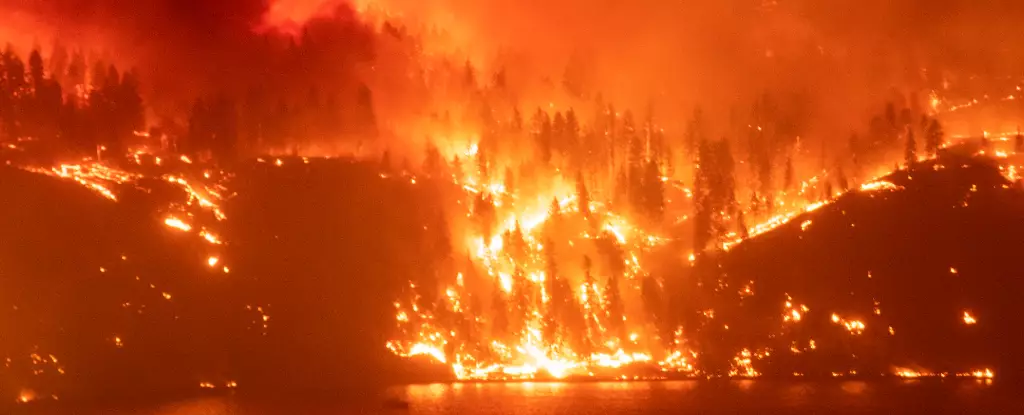Los Angeles is currently engulfed in flames, a scenario mirrored in various regions worldwide, including Colorado, Maui, and even distant countries like Greece and Australia. These rampant blazes are not merely isolated incidents; they symbolize a broader pattern of ecological disturbances fueled by an antiquated yet ever-evolving relationship between humanity and fire. Reviewed through a historical lens, one can discern that our affinity for fire has pervaded human existence, shaping civilizations and ecosystems alike. For millennia, fire has been a double-edged sword—it offers warmth and energy, while simultaneously posing a substantial threat when unleashed. As we grapple with unprecedented wildfires and environmental degradation, we must examine this intricate dance between fire and humanity, delving into how our collective actions have steered the earth into a “Pyrocene,” akin to an age defined by fire.
Fire’s relationship with humanity has historically had a stabilizing effect on ecosystems, but recent changes have drastically altered this dynamic. As technological advancements have influenced the way we use fire, they have also ushered mankind into an era where fires are no longer merely a natural occurrence but a modified force that collides with human infrastructure. In many respect, we are experiencing a moment in history where the planet could be compared to a fiery ice age, one that is fracturing traditional ecological balances. The term “Pyrocene” encapsulates this new age, signifying a world where fire, rather than ice, dominates our ecological narrative. This concept enables one to ponder whether we are witnessing an irrevocable transformation in the planet’s conditions, wherein fire defines the very essence of various biomes and landscapes.
It is important to interrogate the dialectic relationship between climate change and the burgeoning frequency of wildfires. For decades, climate change has acted as a complicit force, enhancing the conditions under which wildfires thrive. As global temperatures rise, hotspots for combustion have emerged, creating a hyper-sensitive environment vulnerable to ignition. The aftermath is omnipresent: cities are charred, air quality declines, and entire ecosystems are disrupted. What must not be overlooked, however, is the role that fossil fuels play in this equation. The transition to a fossil-fuel-dependent society has exacerbated both climate change and our fire practices, hindering traditional ecological checks and balances that once limited fire’s potent reach.
Numerous policies and practices over the past century aimed to suppress wildfires, often misunderstanding their ecological role. These interventions have led to fire prevention tactics that ironically resulted in landscapes accumulating excess fuel over time. As nature’s cycles of fire become distorted under the weight of human interference, the stage is set for explosive incidents when wildfire inevitably reemerges. The rough irony lies in the fact that while suppression efforts aimed to protect communities, they inadvertently participated in the creation of conditions ripe for large-scale fires. It is in this context that fire loses its character as a natural phenomenon and transforms into a destructive megaforce, resulting in what could be described as a frantic gap between ideal fire management practices and their ecological realities.
The implications of this pyric transition extend far beyond mere wildfires; they interlink with global issues such as climate change, biodiversity loss, and the safety of human settlements. When we analyze our relationship with fire, we must also recognize how our lifestyle choices and urban development contribute to a vastly different future for our planet. The insights derived from historical fire practices and ecological systems can guide us toward more sensible choices moving forward. As urban planning evolves to account for these destructive fire cycles, it is critical to rethink how communities engage with their landscapes—incorporating indigenous practices of managing fire harmoniously rather than through complete eradication.
Ultimately, the phenomenon of the Pyrocene demands immediate attention. Our current trajectory threatens not only human life and property but the very fabric of the planet’s biodiversity. By recognizing our interconnectedness with fire, alongside the urgency of climate action, we can pave the way for an integrated approach to living with fire that respects its power and inherent role in our ecosystems. Instead of viewing fire as an enemy, it is time to embrace a reconciliation with nature’s forces, fostering resilience in our landscapes. Down the line, this could significantly impact how we navigate our world—one that is burning, yet holds the potential for renewal and balance. This shared endeavor lies within our realm of possibility; thus, we must act decisively today for a more sustainable tomorrow.

